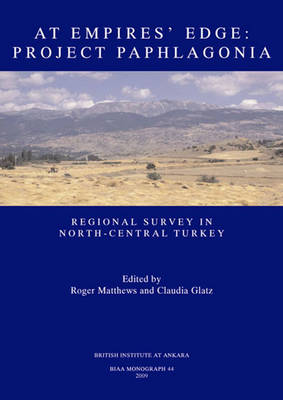British Institute at Ankara Monograph
1 primary work
Book 44
Project Paphlagonia was a multi-period, large-scale programme of regional survey in northcentral Turkey, today the provinces of Cankiri and parts of Karabuek, previously a little explored region. In total, an area of almost 8,500km2 was surveyed between 1997 and 2001, using both extensive and intensive survey techniques. More than 330 sites of archaeological
and historical significance were located and recorded. The sites range in date from early
prehistoric to Ottoman, and include Palaeolithic camp-sites, Chalcolithic and Early Bronze
Age settlements and cemeteries, fortified defensive sites of the Hittite and other periods,
Phrygian villages and burial tumuli, and a wealth of small towns, villages, farmsteads and
hill-top refuges of the Hellenistic, Roman, Byzantine and early Turkish periods. This
volume, to be used in conjunction with the Project Paphlagonia website presents synthetic treatments of all these periods as well as studies of the geology, geomorphology
and climatology of the region. Studies of long-term settlement trends and patterns
complete this publication of an important and productive programme of archaeological and
historical survey.
and historical significance were located and recorded. The sites range in date from early
prehistoric to Ottoman, and include Palaeolithic camp-sites, Chalcolithic and Early Bronze
Age settlements and cemeteries, fortified defensive sites of the Hittite and other periods,
Phrygian villages and burial tumuli, and a wealth of small towns, villages, farmsteads and
hill-top refuges of the Hellenistic, Roman, Byzantine and early Turkish periods. This
volume, to be used in conjunction with the Project Paphlagonia website presents synthetic treatments of all these periods as well as studies of the geology, geomorphology
and climatology of the region. Studies of long-term settlement trends and patterns
complete this publication of an important and productive programme of archaeological and
historical survey.
